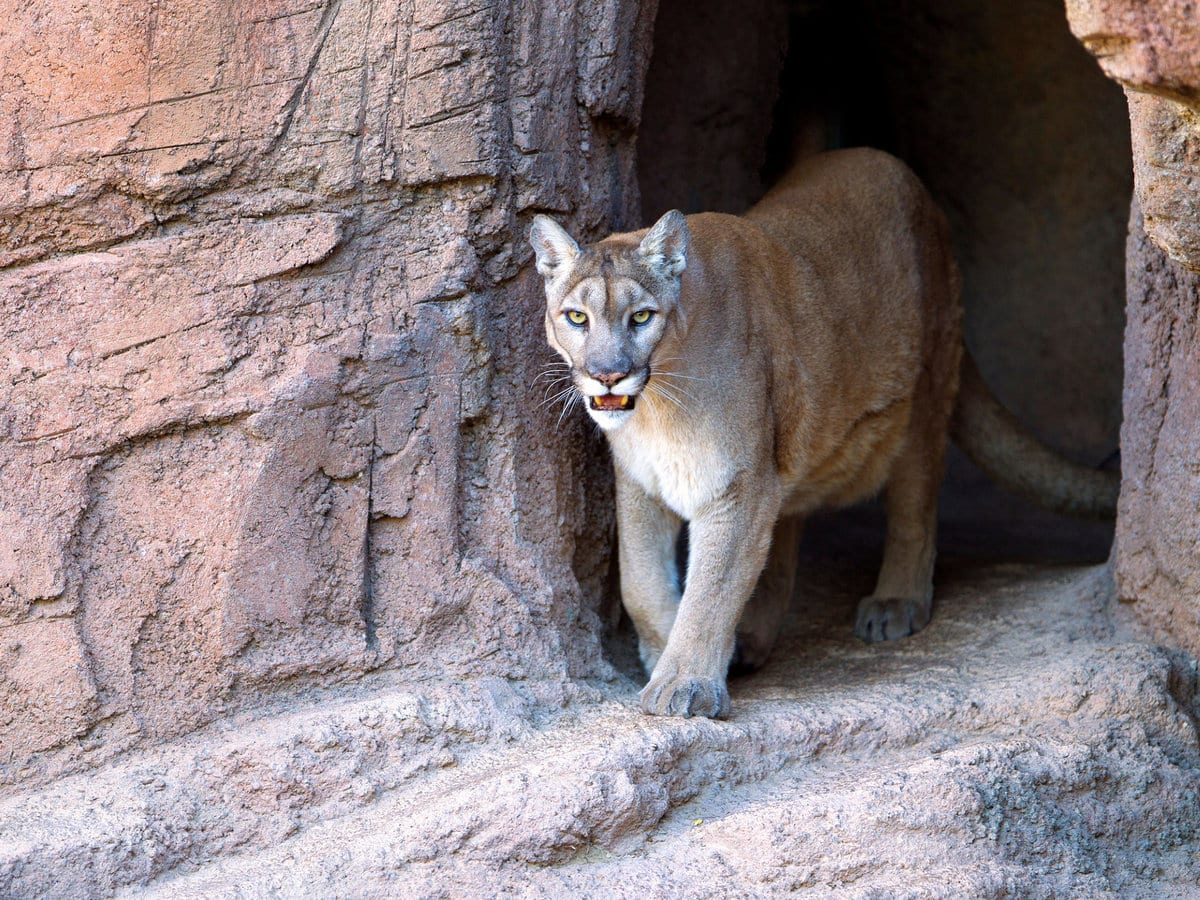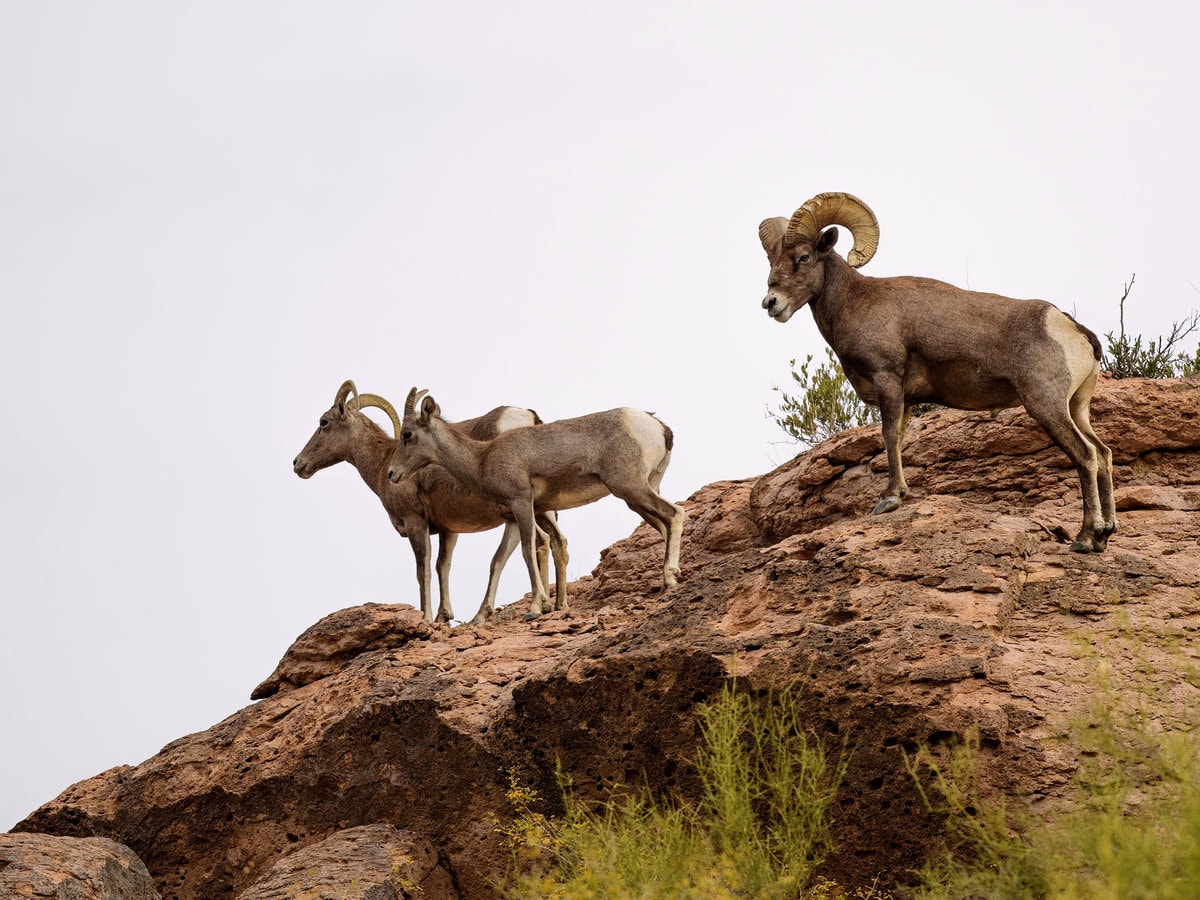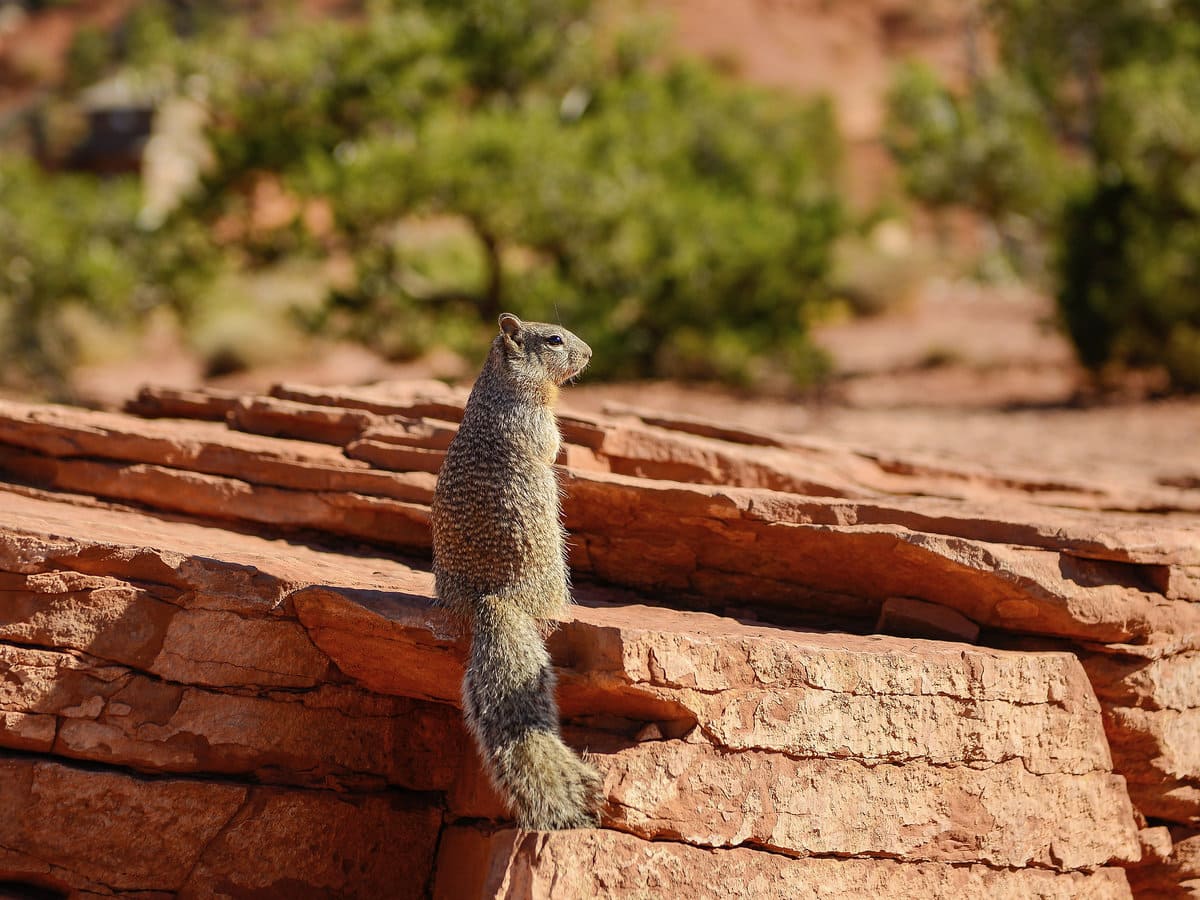Here’s the place to be if you’ve ever wondered what species of animals call the Grand Canyon home!
The Grand Canyon, located in northern Arizona, is well known across the world for its breathtaking vistas, profound chasms, powerful Colorado River, and desert terrain. The Grand Canyon and its surroundings are home to a wide range of habitats, from low desert vegetation to alpine forests. This vast area of national park property has it all. Many types of vegetation and climates coexist alongside hundreds of species, including insects, birds, reptiles, and much more!
If you’re lucky, you might be able to spot some of the park’s more elusive inhabitants, like mountain lions, as well as some of the more common ones, like deer.I included a list of every animal that you might encounter or not in the Grand Canyon in this post. They are all fascinating and crucial to the local ecology, regardless of how charming or scary they may be. Read on to discover all the incredible animal life that can be found in Grand Canyon National Park.
1. Mountain Lion

The elusive mountain lion, also referred to as a cougar, is the top predator in this area but is hardly seen by tourists! A mountain lion’s diet usually consists of whatever it can capture, which can include bison calf if it’s available, deer, elk, bighorn sheep, turkey, and other birds.
With the exception of mating and the time when mothers raise their kittens into adulthood, males and females lead solitary lives. A male mountain lion’s territory can span up to 150 square miles, and they often enter and exit national parks. Mountain lions have a vast home range. Few hikers or visitors have ever spotted one of the at least dozen of these large cats that reside in and around the park.
Although they do not pose a threat to humans, mountain lions should always be avoided when crossing the road, particularly on East Rim Drive in Grand Canyon National Park.
2. Elk

Elk are among the most well-known inhabitants of the South Rim; they are the second-largest member of the deer family (after moose), standing between four and five feet tall at the shoulder and weighing up to 700 pounds for males, or bulls.
A deep, booming sound that echoes through the woodlands on the north and south rims of the Grand Canyon may be heard in the early autumn months. During the mating season, or rut, this is the bull elk’s mating call. Because their hormones are running high and they are battling with other bulls to gather their own group of female elk, known as cows, these bulls may be highly dangerous and irritable during this time of year.
Outside of the mating season, elk on the South Rim are usually lonely, either sleeping beneath the trees just off the road or hanging out by the roadside, munching on some deliciously green grass. They’ve even been spotted by me strolling around Bright Angel Lodge and on the train tracks. The elk in the vicinity of Grand Canyon Village are no longer afraid of people, but it does not make them domesticated! If you come across any wildlife in the park, always keep your distance from it.
3. Birds

There are too many different species of birds that call the Grand Canyon home for me to include them all in one area! From the enormous California Condor to the tiny hummingbird, up to 450 different species of birds call this place home.
Resurrected from near extinction in the 1990s, the California Condor is one of the rarest birds in the world. Since they can search large regions for food and prefer to sleep on steep cliffsides, the Grand Canyon is an ideal location for the few mating pairs that still call it home. From tip to tip, their wingspan is an incredible 9.5 feet!
Other birds that make their homes in the Grand Canyon are Mexican spotted owls, canyon wrens, blue jays (my personal favorite!), ravens, bald eagles, and peregrine falcons (the fastest animal in the world, they can dive at speeds up to 200 miles per hour!). For avid birdwatchers, the Grand Canyon is a fantastic place to spot your favorites with wide-open views; just bring your binoculars!
4. Rattlesnakes

These reptiles are essential to the identity of Arizona’s national parks! Rattlesnakes in Grand Canyon National Park are classified into six species, all of which should be approached respectfully from a distance.
In order to notify you of their existence, rattlesnakes have a convenient warning system on the end of their tails. Rattlesnakes almost never strike without warning, but it’s still a good idea to keep off the trail and away from their natural area.
Numerous tales of campers in the Grand Canyon discovering a rattlesnake curled up next to their sleeping bag for warmth have been told to me, but this could just be urban legend! More often than not, they’re dashing across the paths, hiding behind shrubs or stones, or lounging on big boulders.
In addition to its characteristic diamond-shaped head and tail rattle, these poisonous reptiles also typically have distinctive markings and thick bodies.
You should always think a snake is deadly and give it room, regardless of the type of snake you observe in the Grand Canyon.
5. Bighorn Sheep

The bighorn sheep population in the park is one of the few in the nation that hasn’t need to be returned to its native environment. These sure-footed members of the sheep family have lived in the Grand Canyon for thousands of years.
With their large, grey hooves that resemble rubber, these sheep are quick and graceful, enabling them to climb and descend even the steepest of terrains.
Groups of females (ewes), young (kids), and males (rams) make up the majority of bighorn sheep’s habitat. During mating season, the rams go into fights with each other, “ramming” one other with their thick horns and heads, which echoes down the canyon like a gunshot.
While trekking, keep an eye out for some bighorn sheep that might be making their way across the canyon on precipitous cliffsides and slopes. Remember to look down as well; at some of the widely-liked overlooks along the rim, you might be able to spot them directly below you!
6. Bison

The American Bison, which has been reintroduced to the North Rim and is currently home to up to 220 individuals, is far rarer in Grand Canyon National Park. Officials from the national park have been closely monitoring these bison, and any surplus that the area cannot support is taken and distributed to other herds across the nation in order to increase the genetic diversity.
As bison are known to be erratic and irritable, particularly during the rut, you should always maintain a minimum of 100 feet between you and them. Males can weigh up to 2,000 pounds and reach heights of over 6 feet, making them almost astronomically large! They are a throwback to the American Southwest with its recognisable curving horns, shaggy heads, and shoulder hump.
Bison are unique to the park and are typically found grazing in broad meadows on the North Rim of the Grand Canyon. When they are born, baby bison have a dusty red colour; females are light brown, and males are usually darker overall and have shaggier manes.
7. Kaibab Squirrel

The Kaibab Plateau, which comprises the North Rim of the Grand Canyon and some areas of the surrounding terrain, is the only location on Earth where this nimble tiny mouse may be found. With a grey or nearly black body, these adorable little gentlemen are primarily recognised for their fluffy white tails and tufted white ears.
Only the ponderosa forests of the North Rim and the ponderosa forests close to Jacob Lake, which is located roughly 60 miles north of the canyon, are home to kaibab squirrels. Their main sources of food are the seeds from ponderosa pine cones, along with acorns, fungus, and wild fruit. They are agile and swift rodents, and you may hear them chatting as you walk under the trees where they live.
Tips for Wildlife Watching in the Grand Canyon:
- Respect Wildlife: Keep a safe distance from animals and never feed them. It’s crucial to observe without interfering with their natural behavior.
- Binoculars and Cameras: Bring binoculars and a camera with a good zoom lens to capture wildlife moments from a distance. Avoid using a flash, especially at night.
- Hiking Etiquette: Stick to designated trails and follow Leave No Trace principles. This minimizes human impact on wildlife habitats.
- Be Prepared: Carry water, snacks, and appropriate clothing. The Grand Canyon’s weather can be unpredictable, and being prepared ensures a safe and enjoyable experience
- Educate Yourself: Learn about the species you might encounter and their behaviors. This enhances your wildlife watching experience and contributes to conservation efforts.
FAQ’S:
Q1: What are the 7 Grand Canyon Wildlife species?
The 7 Grand Canyon Wildlife species include the California condor, bighorn sheep, black bear, mountain lion, mule deer, elk, and the elusive ringtail cat.
Q2: Where can I spot the California condor in the Grand Canyon?
The California condor can often be seen soaring near the South Rim of the Grand Canyon. Look for them along the cliffs and thermal updrafts.
Q3: Are there any safety precautions for encountering mountain lions in the Grand Canyon?
Mountain lion encounters are extremely rare, but it's advisable to hike in groups, make noise, and avoid hiking during dawn or dusk when they are most active.